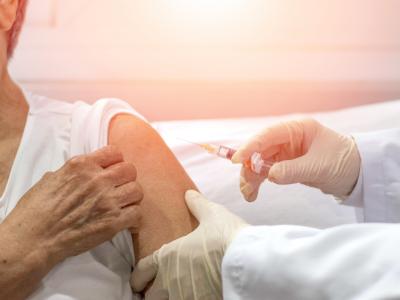Toolkit aims to help messaging around HAIs, antibiotic resistance
The Association of State and Territorial Health Officials (ASTHO) and the Centers for Disease Control and Prevention (CDC) have collaborated on a toolkit to help public health departments communicate information about healthcare-associated infections (HAIs) and antibiotic resistance to the public.
The toolkit includes key messages and talking points that public health departments can use when communicating with other public health professionals, policy makers, the media, and the public. The messages focus on the impact of HAIs, the threat posed by antibiotic resistance, and what healthcare facilities can do to prevent HAIs and the spread of drug-resistant infections.
In addition to specific tips for working with the media, the toolkit contains suggestions for sustaining the public conversation around HAIs, recommendations for engaging the public through social media channels like Facebook and Twitter, and a calendar of HAI-related events that can be used to promote discussion of HAIs and antibiotic resistance.
ASTHO will be hosting a webinar to provide guidance on how to use the tools on Dec 16 from 2:00 to 3:00 pm ET.
ASTHO-CDC HAI and antibiotic resistance communication toolkit
Dec 16 ASTHO-CDC webinar
Paper examines potential of marine products against resistant infections
A paper yesterday in The Lancet Infectious Diseases examines the potential of marine natural products (MNPs) in the treatment of antimicrobial-resistant infections.
With the emergence of antimicrobial resistance imposing a major burden on global health and economics, novel drugs from new sources possessing innovative targets are needed. And since it has already proven to be "a very rich source" of diverse natural products with antimicrobial activities, the marine environment, the authors write, "could serve as a ray of light for the therapy of drug-resistant infections."
In a review of existing literature, the paper examines the potential of MNPs in drug-resistant fungi, viruses (including drug-resistant influenza, HIV, and herpes simplex virus), and drug-resistant malaria. Though equally important, MNPs with activity against drug-resistant bacteria are not part of the review, the authors note, because their use is vast and reviewed extensively elsewhere.
The review examines the origins, activities, and physicochemical properties of several products extracted from marine algae, fungus, coral, and sponges. These include spiromastilactone D, a substance derived from a deep-sea fungus that inhibited a panel of amantadine and oseltamivir-resistant influenza strains; stachybotrin D, which was isolated from a marine sponge-associated fungus and displayed inhibitory effects on replication of drug-resistant HIV-1 strains; and haliclonacyclamine A, a product isolated from a marine sponge that has exhibited antiplasmodial activity in vitro against chloroquine-resistant strains of malaria.
While there are several challenges in turning these products into novel biomedicines—including the time and money required to develop them, insufficient investment, difficulty in isolation and purification procedures, and toxicity—the authors argue that the search for new MNPs should continue.
"Development of resistance-resistant antibiotics could be achieved via the coordinated networking of clinicians, microbiologists, natural product chemists, and pharmacologists together with pharmaceutical venture capitalist companies," the authors write.
Dec 12 Lancet Infect Dis review













